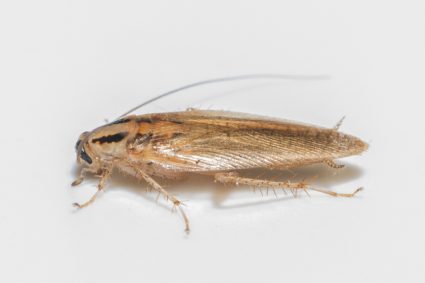
Flea and tick medications are a critical part of pet care. They help to protect our furry friends from the discomfort and potential diseases that these pests can cause. But how effective are they? In this comprehensive guide, we delve into the effectiveness of flea and tick medications, their types, how they work, the factors that can affect their efficacy, potential side effects, and the time it takes for them to kick in.
Flea and tick medications are generally effective in preventing and treating infestations, with post-treatment efficacy rates ranging between 96.1% and 98.9% for some products. However, their effectiveness can be influenced by factors such as correct usage, dosage, environmental factors, and breed sensitivities. It’s important to consult with a veterinarian to choose the right product and ensure its proper use.
Types of Flea and Tick Medications
There are several types of flea and tick medications available in the market. These include:
- Topical medications such as Frontline Plus, K9 Advantix II, and Vectra 3D
- Oral medications like NexGard, Simparica, Credelio, and Bravecto
- Sprays
- Powders
- Flea and tick shampoos
- Dips
- Collars, like the Seresto collar
Each of these types of medications has its own way of working and its own set of pros and cons.
How Flea and Tick Medications Work
Flea and tick medications target the nervous systems of these pests, causing them to lose their ability to feed on your pet and eventually die. Different active ingredients in flea and tick medications have different mechanisms of action. For example, permethrin causes a “knock-down effect” on insects by rapidly penetrating their nervous systems, while isoxazolines inhibit GABA- and glutamate-gated chloride channels in the arthropod nervous system, leading to hyper-excitation and death of the flea or tick.
Effectiveness Rate of Flea and Tick Medications
The effectiveness rate of flea and tick medications varies depending on the specific product and its method of administration. In a study reviewing the efficacy of systemically and cutaneously distributed ectoparasiticides, post-treatment tick efficacy ranged between 96.1% and 98.9% for a period of 4 weeks following spot-on administration. Another study on a novel orally administered combination product showed an efficacy of ≥ 97.8% for 4 weeks at 12 hours after post-treatment re-infestations, and 85.6% on Day 35.
Factors Affecting the Effectiveness of Flea and Tick Medications
There are several factors that can affect the effectiveness of flea and tick medications. These include incorrect usage or application, inadequate dosage, environmental factors, owner adherence to recommendations, interactions with other medications, and breed sensitivities.
Potential Side Effects of Flea and Tick Medications
While flea and tick medications are generally safe, they can cause side effects in some pets. These can include skin irritation, vomiting, diarrhea, trembling, seizures, and other effects. If you suspect that your pet has had an adverse reaction to a flea and tick medication, consult your veterinarian immediately.
Time Taken for Flea and Tick Medications to Start Working
The time it takes for flea and tick medications to start working depends on the type of treatment used. For oral flea medications, they can start working within 30 minutes to 4 hours, with some products killing 100% of fleas within 24 hours. Topical flea and tick medications generally take effect within 12 to 48 hours.
Effective Non-Toxic Alternatives
There are non-toxic alternatives to conventional flea and tick medications that can help protect your pet. These include food-grade Diatomaceous Earth, nematodes, black walnut, essential oils, herbal shampoo, and natural flea and tick sprays.
Remember, regardless of the type of flea and tick medication or alternative you choose, always consult with your veterinarian to ensure it’s safe and suitable for your pet.
Conclusion
In conclusion, flea and tick medications are generally effective, but their efficacy can vary depending on the product and its active ingredients. It’s essential to consult with a veterinarian to choose the right product for your pet and follow the label directions to ensure proper use and avoid adverse reactions. It’s also important to remember that no single flea and tick prevention method is 100% effective, and maintaining a consistent treatment schedule and addressing environmental factors can help improve the efficacy of these medications.
Frequently Asked Questions
Can flea and tick medication be used on puppies or kittens?
Yes, flea and tick medication can be used on puppies and kittens, but it’s important to check the product label for age restrictions as some treatments are not suitable for very young animals. Always consult with a veterinarian before starting any new medication regimen for your pet.
Can I use flea and tick medication on my pet if they are pregnant or nursing?
Some flea and tick medications are safe to use on pregnant or nursing pets, but others may not be. It’s crucial to consult with your veterinarian before administering these medications to a pregnant or nursing pet.
How often should I apply flea and tick medication to my pet?
The frequency of application can vary depending on the specific product used. Some treatments need to be applied monthly, while others may last for up to eight months. Always follow the manufacturer’s instructions for the best results.
Can I use more than one type of flea and tick medication on my pet at the same time?
It’s generally not recommended to use more than one type of flea and tick medication at the same time without consulting with a veterinarian. Some medications can interact with each other, potentially leading to side effects or decreased effectiveness.
What should I do if my pet still has fleas or ticks after treatment?
If your pet still has fleas or ticks after treatment, it’s important to consult with a veterinarian. They may recommend a different product, or there may be environmental factors at play that are contributing to the infestation.












